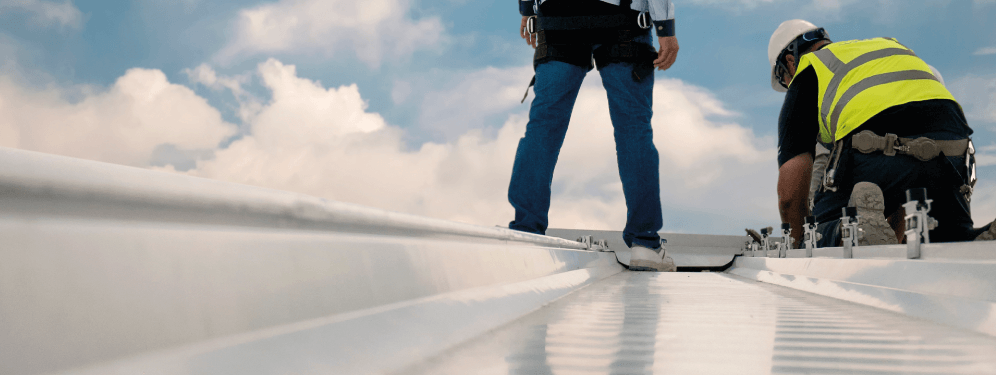Carrying out maintenance to roofs or accessing areas on rooftops is something that can’t be avoided and it's important to mitigate the risks to staff and the public when possible.
In 2021/2022 falls from height made up a quarter of deaths from work-related accidents, as well as being the main cause for life-changing injuries. Construction workers make up the majority of this.
For this reason, its highly important that a system is put in place to keep employees and the public safe while carrying out tasks on rooftops. Not just to prevent accidents but to abide by UK laws and avoid litigation.
How To Eliminate Accidents
Keep up to date with regulations through the HSE website.
Staying up to date with the current health and safety obligations is the best way to avoid any mistakes or accidents that can occur and therefore avoid legal action against your company due to personnel injury or, worst-case scenario, death.
You do also have a legal responsibility to adhere to regulations such as The Work at Height Regulations 2005.
The Working at Height Regulations 2005 purpose was designed to prevent death and injury caused by falls at height. Including using the right type of equipment for working at height. Before any work is carried out at height employers must first asses the risks and put in place any protection that is required for the working environment.
Since this legislation was put into place there has been a significant drop in deaths and injuries due to height-related accidents.
What Roof Protection Is There?
There are a few ways to keep your staff protected when working at height.
We suggest installing a guardrail system around the roof perimeter. This is a proven way to offer strong edge and fall protection and is classed as 'Collective protection'. As per HSE's guide to working at height, it states 'Always consider measures that protect everyone who is at risk (collective protection) before measures that protect only the individual (personal protection). Collective protection is equipment that does not require the person working at height to act to be effective, for example a permanent or temporary guard rail.'
Several different systems can be installed depending on the scenario of the building and where the system is being applied:
Freestanding Roof Guardrail

This does not need fixing or drilling into the roof membrane/surface which can lead to water leaks and other damage. Instead, the system includes rubber counterweights which hold the roof guardrail down and is perfect for installing on flat roofs.
If you are going down the avenue of installing a freestanding system, it's best to make sure you are installing the right one. Over the years there have been many changes to the freestanding system to offer the most safe and effective way of fall protection. Recently in 2021, a new British standard was released which requires the freestanding guardrail system to be manufactured to a certain design and meet specified test requirements.
At Lockinex, we are one of the first UK suppliers to offer a system that fully complies with this latest British Standard, BS 13700:2021. Our freestanding roof guardrail is designed and tested with this specific standard in mind and has been installed at numerous sites throughout the UK.
Take a look at our Freestanding System
Fixed Roof Guardrail

This system is designed for permanent installation on metal-clad roofs or other similar suitable roof structures. The system is fixed down onto the roof surface through the pre-holed base plated posts, typically using self tapping screws or rivets.
We supply standard vertical upright posts as well as our bespoke posts which can then be raked to the angle and direction required for the roof slope.
All of our posts are hot dip galvanised to British Standard BS 1461:2022. The system is also designed and tested to British Standard BS EN 14122-3:2016 Permanent Means Of Access To Machinery.
Take a look at our Fixed System
All of our roof guardrail components are hot dip galvanised to BS EN 1461:2022 for strong corrosion resistance and a long service life.
To find out more about what roof guardrail protection we can offer your company contact a member of our sales team
View our technical literature on our BS 13700:2021 Roof Guardrail
View our technical literature on our Fixed System For Metal Clad Roofs
References:
https://www.legislation.gov.uk/uksi/2005/735/contents/made
https://www.hse.gov.uk/work-at-height/the-law.htm
https://www.hse.gov.uk/pubns/indg401.pdf
https://www.hse.gov.uk/statistics/fatals.htm

